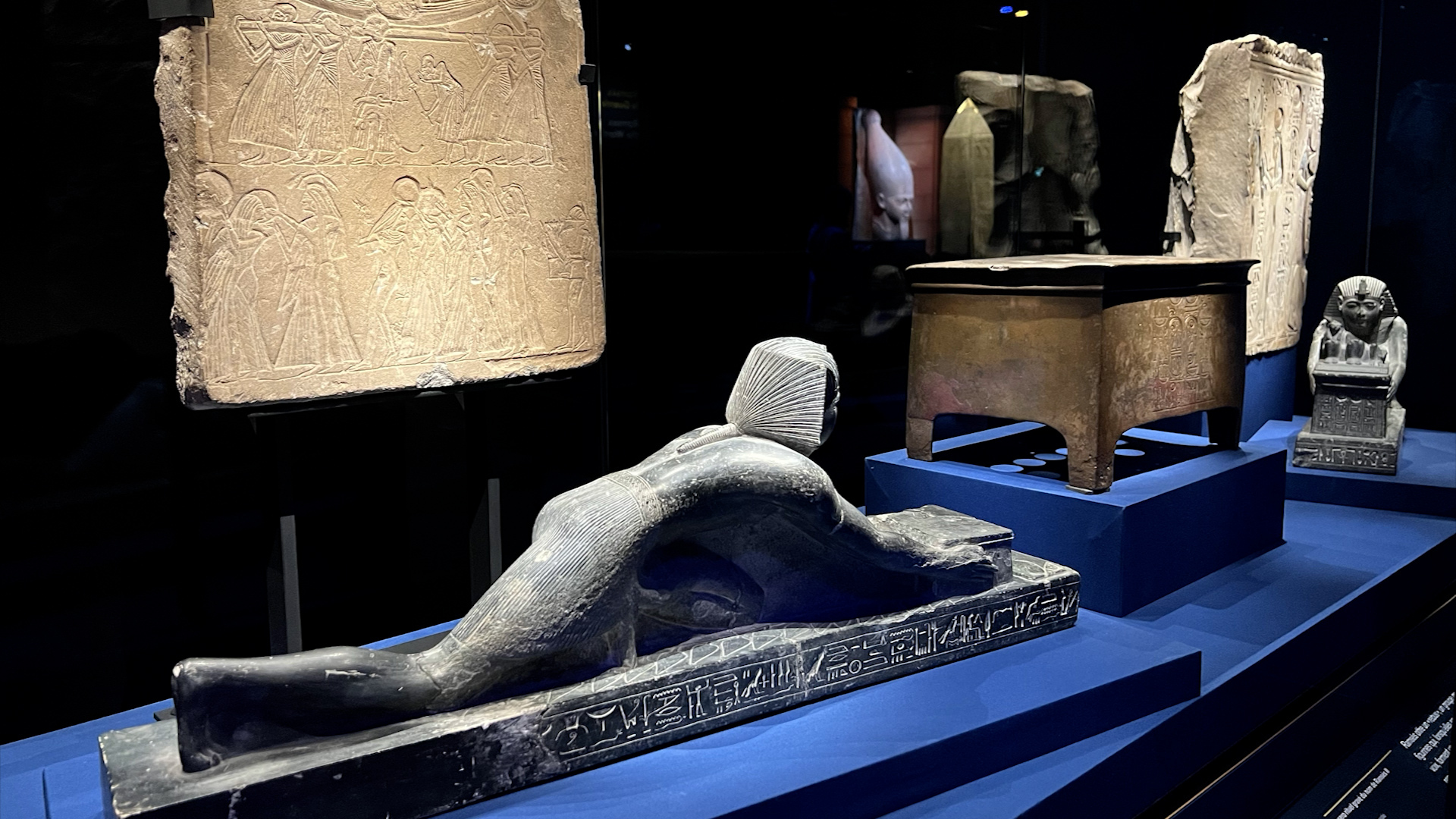PARIS – It is no secret that the history of ancient Egypt has a special charm that many around the world admire, as it was able to combine the heritage of civilization, culture, arts and kings, especially King Ramses II, who had a rich history and expansions that extended to the borders of China.
The coffin of the famous builder of Pharaonic Egypt arrived in the French capital, Paris, to be a guest until the sixth of next September in an exceptional exhibition that includes 180 pieces of ancient Egypt at La Villette Hall, under the title "Ramses - The Gold of the Pharaohs."
Power and wealth
The visitor's journey to this exhibition begins in 1304 BC in the ancient city of Memphis, where a new king ascended the throne and will become the longest ruling pharaoh in history and the third ruler of the 19th Dynasty, reflecting his career as a symbol of power and wealth, establishing peace and expanding the country's borders.
The Hall of La Villette evokes various temples, statues and ornaments left by the ruler of Egypt as a witness to his reign, as well as videos explaining the stages of mummification of the pharaohs and others detailing the battle of Kadesh, in present-day Russia, against the alliance of the Hittite Empire.
The exhibition also offers a virtual reality experience that allows visiting the temples of Abu Simbel and the tomb of Queen Nefertari in an exciting adventure that combines history and technology.
From the temples of Abu Simbel to Karnak, from the great pyramids of Giza to the Valley of the Kings, one of the largest Egyptology archaeological discoveries over the past two centuries, we are discovering an ancient civilization dating back 3,<> years.
The former Egyptian Minister of Antiquities and archaeologist, Zahi Hawass, said in an interview with Al Jazeera Net that "Ramses II is considered the greatest king ruled Egypt. We used many artifacts to trace the history of Egypt," he said, noting that this exhibition serves to highlight the pivotal periods that allowed the great pharaoh to enter history through its widest doors.
If Ramses' coffin is the star of the exhibition, other priceless pieces can also be discovered, including the golden necklace of Pharaoh Psosines I, which weighs more than 8 kilograms. In addition to a gold mask for General Ondebound and a funerary mask for King Aminmobit.
France and Egypt. Ancient cultural connection
In collaboration with the Supreme Council of Egyptian Antiquities and World Heritage Exhibitions, the sarcophagus, which has protected the pharaoh's mummy for thousands of years, will visit 10 cities during an international tour that began in November 2021 with the first exhibition at the Museum of Natural Sciences in Houston, USA, reaching its last stop in Sydney, Australia.
The ancient Egyptian civilization has a special place in France. Suffice it to cite the private pavilion of the Parisian Louvre as an example.
Dominique Fruttti, Egyptologist and scientific advisor to the exhibition, explained how connected and interested the French people are in the history of Egypt, saying, "The French know Khufu because everyone knows the Great Pyramid of Giza, and he knows Tutankhamun thanks to the funerary treasure discovered by Howard Carter in the Valley of the Kings."
And about Ramses II, Frutti told Al Jazeera Net that he is "a distinctive figure and has an unparalleled historical and political weight. We can compare him to King Louis XIV or as he was nicknamed the Sun King in France."
The French Egyptologist dates back to 1976, when she greeted the mummy of Ramses II with honors, which are usually awarded to heads of state.
"It is said that the mummy would have received a diplomatic passport at the time. Regardless of whether it is real or not, it is certain that no ancient ruler has been greeted with such luxury and splendor."
The sarcophagus of Ramses, made of cedar wood from Lebanon, returns to Paris after 47 years of absence to be the star icon in this exhibition, in order to complete the series of exhibitions hosted in the French capital celebrating the history of the pharaohs.
After the dazzling success of the exhibition "Tutankhamun, the Treasure of the Pharaoh" in 2019 with nearly one and a half million visitors in 6 months, the Ramses exhibition is expected to break a record as well as 145,<> tickets sold even before its opening last Friday (April <>).
Egyptology. Centuries-old "French" flag
Since the Egyptian expedition in 1799, Egyptology has been regarded primarily as a "French science" due to the many expeditions and names of prominent French explorers in the field.
This French interest in ancient Egypt stems from Napoleon's campaign, which gave the military operation of more than 30,160 soldiers - which was aimed at invading Egypt and driving out the English - a scientific and exploratory character thanks to <> researchers.
Mustafa Waziri, Secretary-General of the Supreme Council of Antiquities – in an interview with Al Jazeera Net – confirms the depth of cultural cooperation between the two countries in this specialty, especially mentioning "Jean-François Champollion, who deciphered hieroglyphs 200 years ago using a stele found during Napoleon's campaign." This is a reference to the Rosetta Stone, on which are inscribed 3 texts written in hieroglyphs and ancient Greek, forming the first bilingual document.
The first encyclopedia presented by scholars from 1810 to 1826 also contributed to the revival of the "Egyptian passion" in France and the rest of Europe without exception.
Waziri praised the efforts of "250 foreign missions from more than 25 countries interested in ancient Egypt, 54 of which came from France."

